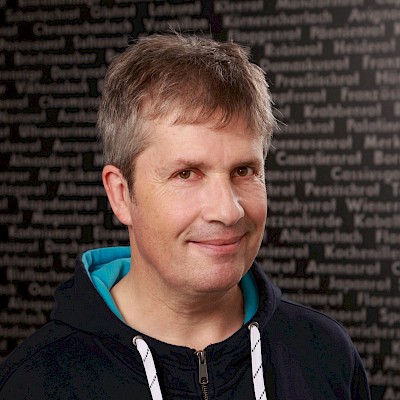Reinhard Förtsch received his doctorate in early 1989 at the University of Göttingen under Klaus Fittschen with the dissertation »Archaeological commentary on the villa letters of the younger Pliny« and became a university assistant at the Archaeological Institute of Cologne University. For october 1989 to september 1990 Förtsch traveled the Mediterranean with a grant from the German Archaeological Institute. Back in Cologne, he received his habilitation in 1995 about »Art use and art legitimacy in archaic and early classical Sparta«. Since 1996 he headed the Research Archive for Ancient Sculpture at the University of Cologne. He also teaches as a professor at the University of Cologne. Since August 2012 he is Scientific Director for Information Technologies at the German Archaeological Institute in Berlin. Since 2015 he is an ordinary member of the German Archaeological Institute.

Reinhard Förtsch
Vita
Fields of Research
Archaeoinformatics, Information Theory, Information Systems (iDAI.world)
Project outline
Portrait, the individual and singularity in a world of artificial intelligence
The individual and the portrait make a genuine connection. Not only does the "portrait as a figuration of the particular" have the sociological dimension of the conditions of abstraction of a section of a society that has remained small in numbers at all times; it also requires individuality as an existing concept of possibility. This concept faces existential challenges. In addition to brain research and its relativization of fthe ree will, molecular genetics and their certain amount of determinism, the renaissance of the so-called artificial intelligence with its self-learning systems has recently become another crisis factor in the concept of the individual. To what extent an adaptation and continuation of the concept of the individual will be possible in the medium term? From the point of view of information theory, the focus is always directed on fixations. All those who are not portrayed are part of the sea of unfixed opportunities – at least when the scope gets widened beyond their direct personal acquaintances. this unfixed sea remains anonymous and, in all of its oppressive size and ubiquity, could evoke the constitution of something special, identifiable as a saving need. In the sense of information theory a portrait would be a signal that can be heard out of the background noise of the sea of anonymity. The notion of the identifier (ID) is too narrow here, although it is also the basic element of information theory. Rather, the term of the signal would be appropriate, in the sense of an identifiable carrier of meaning (whereby the meaning as such is initially irrelevant or yet to be discovered).
Publications (Selection)
Since 1996 i published a suite of information systems that today form the iDAI.world research data environment, with about 4 millions of data (idai.world).